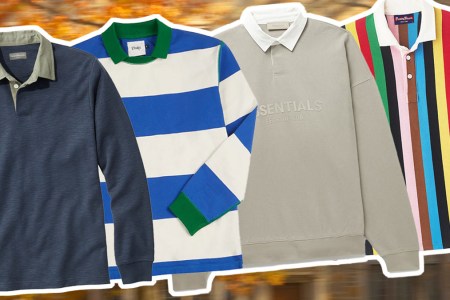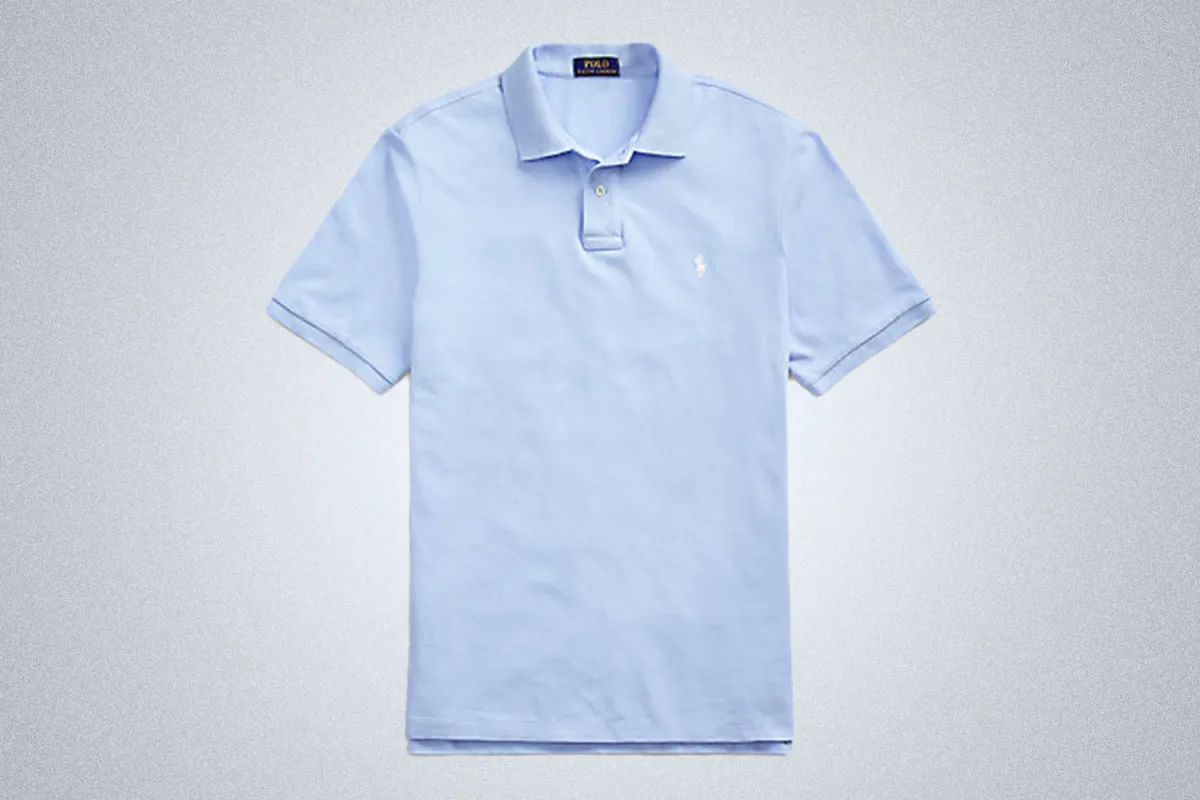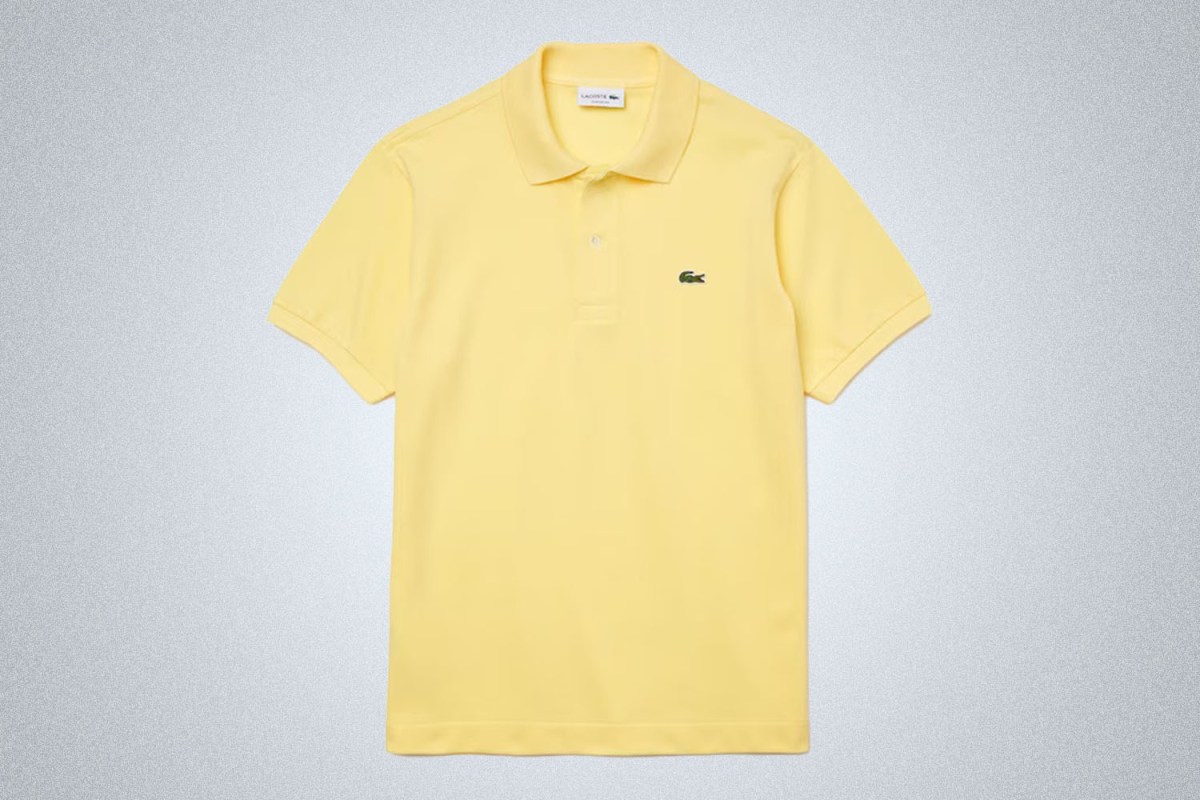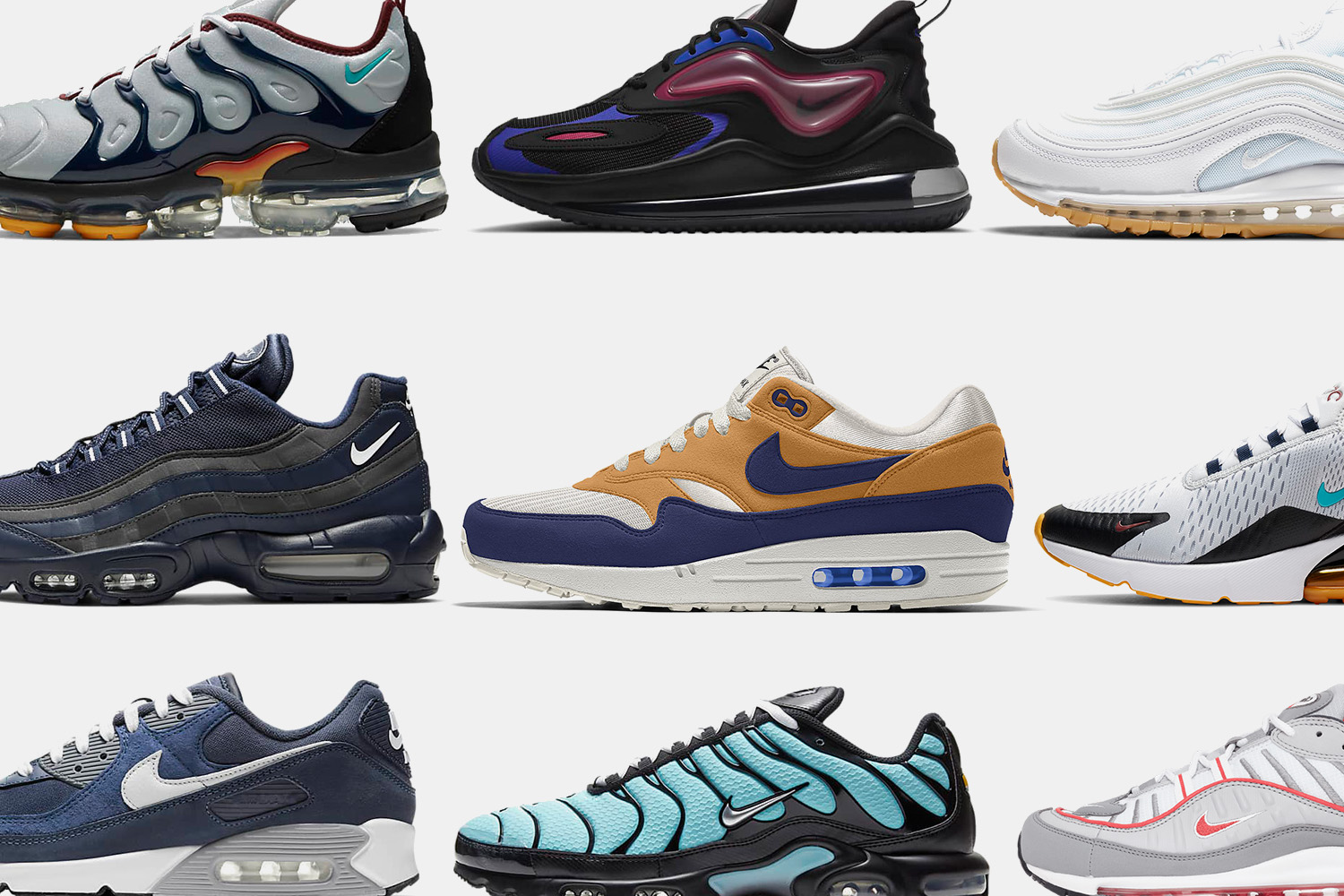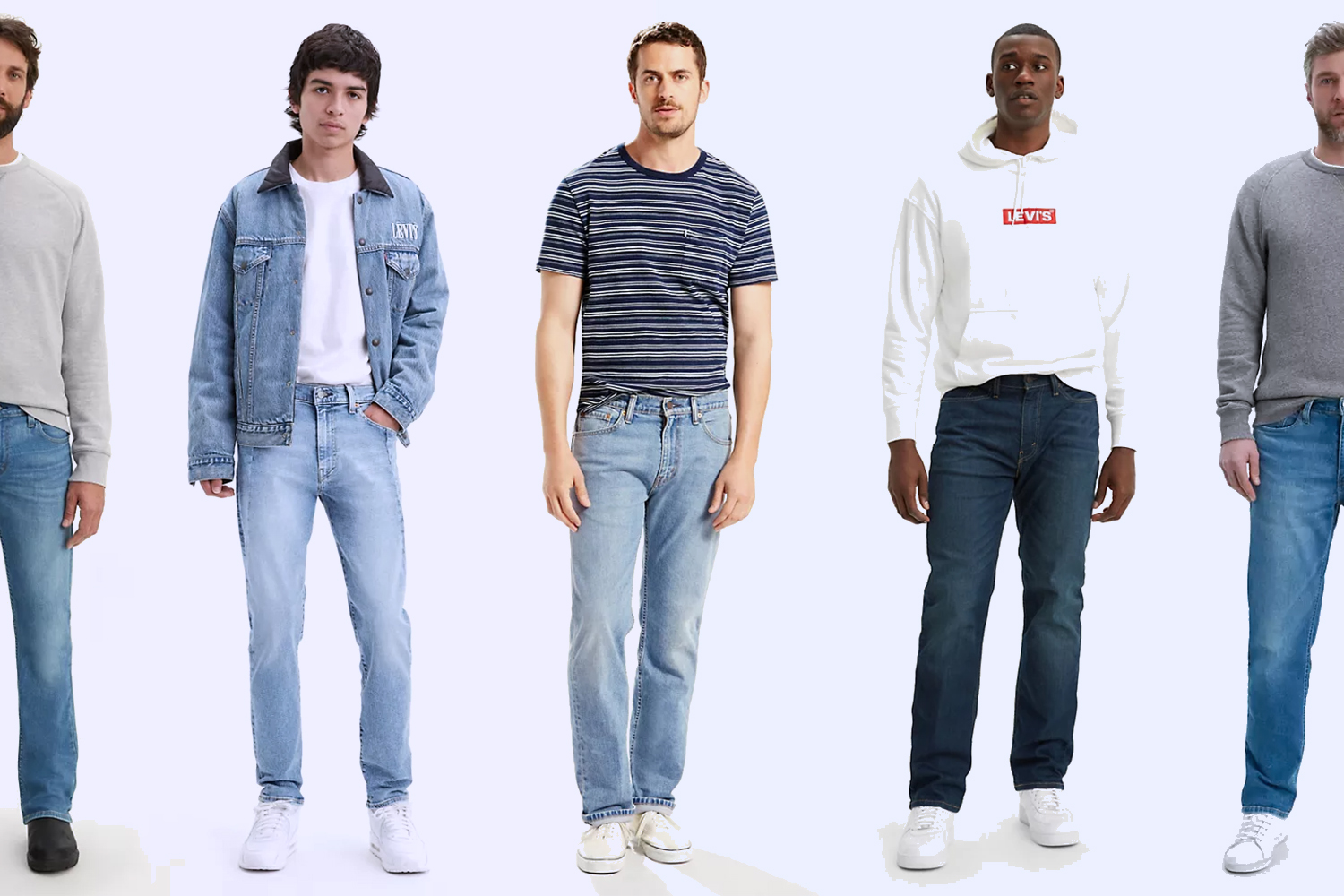Nota bene: All products in this article are independently selected and vetted by InsideHook editors. If you buy something, we may earn an affiliate commission.
It’s a debate as old as time: the Lacoste polo versus the Ralph Lauren polo. Since their respective conceptions, both have been propelled to icon status in the menswear sphere, enduring as wardrobe staples capable of appealing to a range of stylistic sensibilities, considered the pinnacle of prep by many, while simultaneously finding favor among rappers and various counter-culture figures alike.
The Best Rugby Shirts for Men Make Ivy Style Easier Than Ever
It’s fall. Do you know where your rugby is?Choosing between the two, though, can be tricky. Glance at the shirts and you might think they’re identical, save for the logos. But a closer look and some research reveal differing fabrics and cuts, all of which should be taken into consideration when deciding between the designs. So while you might be drawn to the classic all-American aesthetic of Ralph Lauren’s polo, the piqué cotton of Lacoste’s could adhere more to your fabric preferences.
Below we’ve delved into the history of Lacoste and Ralph Lauren’s polo shirts, as well as looking into the difference in fabric, fit and stylistic details between the designs (specifically the Lacoste’s L.12.12 and Ralph Lauren’s Iconic Mesh Polo Shirt, both considered the “original” polos) to help you more easily decide which of the two deserves its place in your closet.
The History of the Polo, From 1896 to 1972
As its name would indicate, the polo shirt’s origins are rooted in the equestrian world. Having adopted polo from Manipur, a state in northeast India, in the 19th century, British military officers stationed there returned home circa the mid-1800s with a penchant for the sport that soon gained popularity across England, particularly among the wealthy and upper class.
The uniform worn by the players was comprised of the expected riding boots and jodhpur pants, both garments sourced from India, while their upper halves were sheathed in what would today be considered a long-sleeve button-down. Yet it wasn’t long before players encountered a nuisance in the form of their shirt collars, which would flap in the wind during play, leaving the players to resort to DIY solutions that included affixing their collars with buttons or pins.
Then along came John E. Brooks, grandson of Brooks Brothers founder Henry Sands Brooks, who was quick to take note of the players’ solution to the problem their collars posed while visiting England in 1896. Upon his return to the States, Brooks tasked his tailors with perfecting a more permanent design to the one he witnessed across the pond. What initially began as a personal preference for Brooks’ own dress shirts was soon introduced to the designs of his family’s long-sleeve collared shirts, with “the original button-down polo shirt” making its stateside debut in 1900.
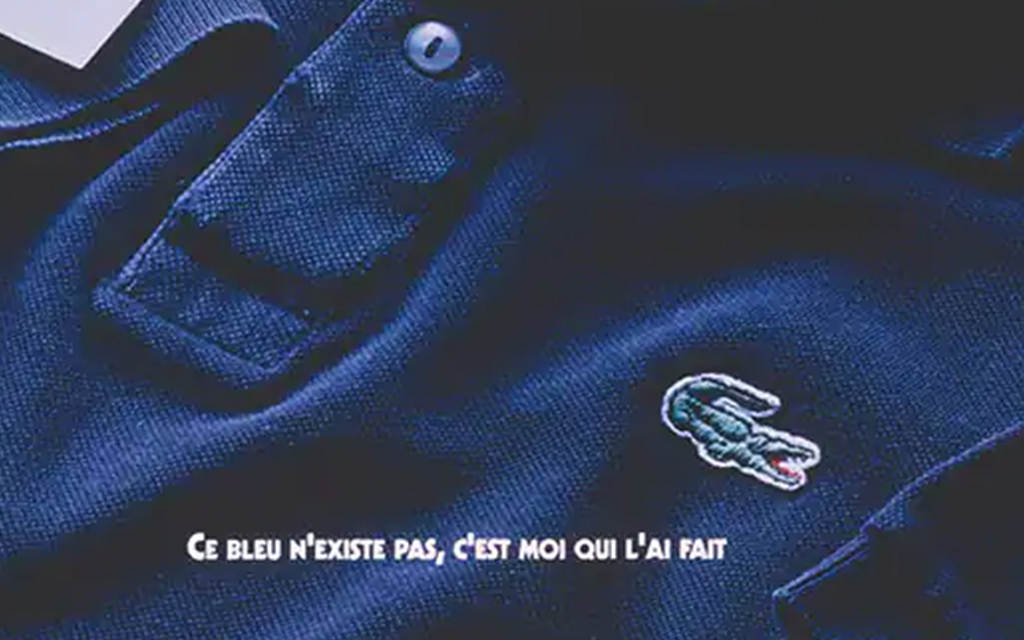
But the polo shirt as we’ve come to know it, i.e., the short-sleeved iteration, wouldn’t arrive for some 30 years and would be related to an entirely different sport altogether: tennis. Not unlike polo players, those who enjoyed the game in the early 1900s typically wore a long-sleeve button-down paired with flannel trousers and ties. French tennis player Jean René Lacoste sought an alternative to the long-sleeve shirt that would help to improve mobility and soon began wearing a short-sleeved, three-button shirt crafted from a lightweight piqué cotton, complete with a crocodile embroidered above the left breast in acknowledgment of his nickname, “le Crocodile.”
Upon his retirement in the early 1930s, Lacoste was propositioned by André Gillier, a French knitwear manufacturer, to sell versions of Lacoste’s tennis shirt that would include the crocodile embroidery; Lacoste agreed, and in 1933 La Chemise Lacoste (today known as simply Lacoste) was born. Nearly 20 years after the brand’s establishment, Izod would acquire the rights to produce and sell Lacoste shirts within the United States, helping to transform the design from mere tennis apparel to a style that could be adopted by the masses.
After witnessing the incorporation of polyester into several tennis shirts on the market, primarily to help combat bleeding and fading, Ralph Lauren, a self-proclaimed patina enthusiast, sought to create a tennis shirt without the synthetic fiber. Thus, 20 or so years after the establishment of Lacoste, Uncle Ralph began offering his own short-sleeve cotton shirt, arriving in 24 colors and bearing the tagline “It gets better with age.” Lauren’s version became an instant success and was soon simply referred to as “the polo shirt,” a colloquialism that persists today.
A Brief Overview:
Fabric: 100% cotton mesh
Fit: Classic
Placet: Two-button
Notable features: Lower armhole, ribbed armbands
Fabric: 100% cotton petit piqué
Fit: Classic
Placet: Two-button
Notable features: Genuine mother-of-pearl buttons
The Fabrics
Staying true to the original, Lacoste’s Classic Fit L.12.12 Polo Shirt is made from 100% cotton petit piqué, a cotton textile invented by René Lacoste specifically for the polo shirt. According to Lacoste’s website, “Petit piqué is made from the highest quality cotton. The fibers are chosen for their softness, resistance and purity,” with 25 km of thread required to make one L.12.12 polo in a size 4 (XL). The length of the thread is longer than most other fabrics, making for a material that is simultaneously durable and lightweight. The fabric is then woven and knitted tightly together to create a weave composed of small cell-like designs which allow air to more easily pass through and lend petit piqué the breathability it’s known for.
Ralph Lauren uses a cotton mesh when crafting their polos, again allowing for breathability thanks to the space between the fibers, creating a subtle honeycomb pattern that varies from Lacoste’s V-shaped design. Yet while both polos are made from 100% cotton, because Lacoste’s is a piqué, the fabric will be thicker and have more heft to it, making it more “durable” in the sense that its color and shape is likely to endure longer throughout wear and wash. This isn’t to say that Ralph Lauren’s polo is going to fall apart after a few wears, but that the effects of wear will be more evident. But again, this is intentional and in alignment with Ralph Lauren’s design ethos, the color of the fabric fading beautifully over time while the shape conforms to the wearer’s silhouette, lending it that lived-in look central to much of the brand’s aesthetic.
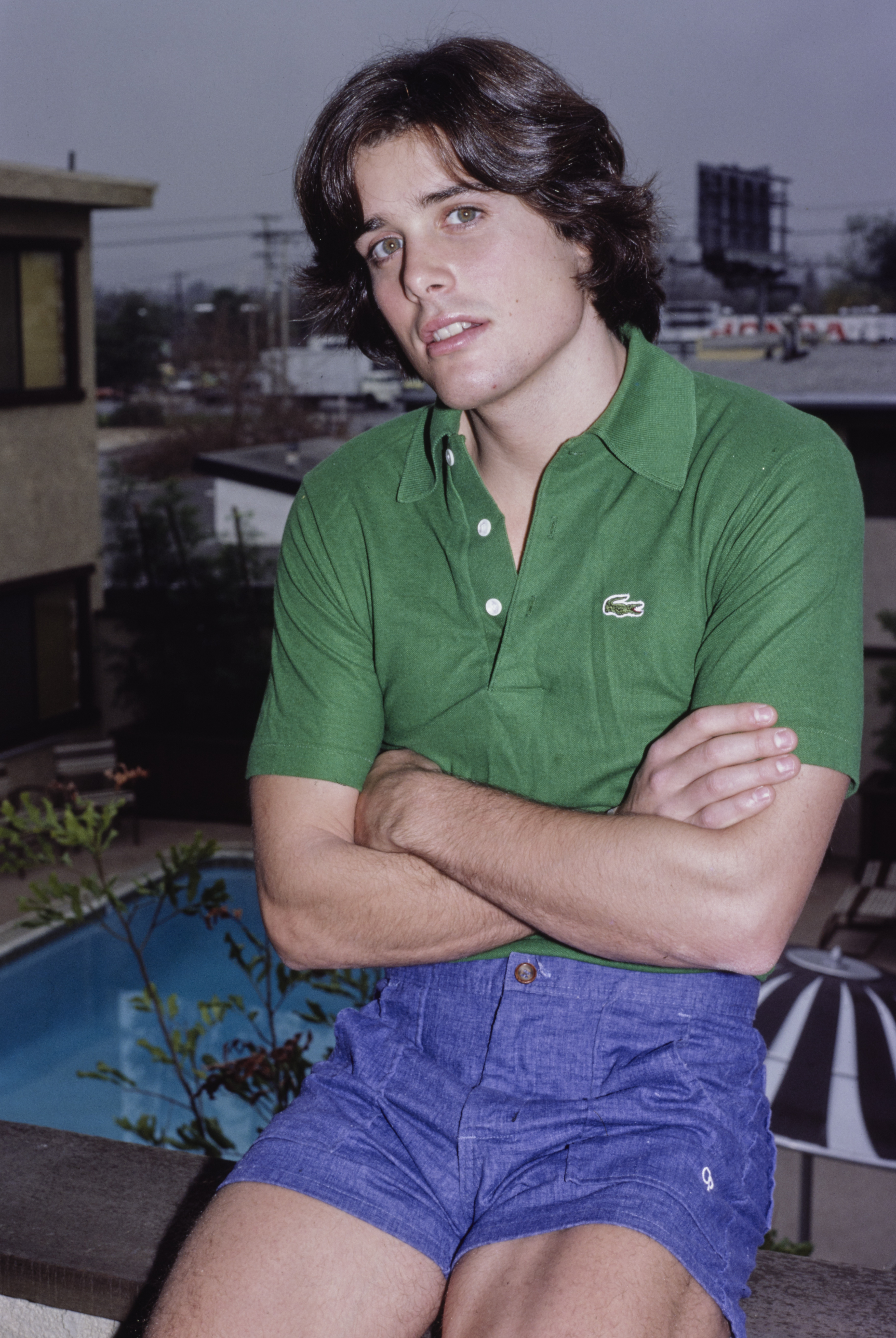
The Fit
Both Lacoste’s L.12.12 Polo Shirt and Ralph Lauren’s Iconic Mesh Polo are cut in a Classic Fit, the definition of “classic” of course depending on the brand. For Lacoste, their fit is generally considered to run truer to size than Ralph Lauren’s, allowing for more room and width in the torso. But the fit of Ralph Lauren’s Iconic Mesh Polo is by no means slim — and it’ll stretch a bit with time. In terms of sleeves, both shirts offer a sleeve that falls a few inches above the elbow, with Ralph Lauren’s cut for a fuller armhole while Lacoste’s skims closer to the body.
Perhaps the most glaring difference in the cuts of the brands’ respective classic silhouettes can be seen in the hem. Ralph Lauren‘s features a tennis tail (meaning the back is slightly longer than the front), while Lacoste’s is the same length around. For those who prefer to tuck in their polos, you’ll appreciate how the added length in the back helps it stay put. But those who prefer to keep things a little more casual might prefer Lacoste, as the longer tail on the RL can feel unpolished when untucked.
Eight Simple Ways You Can (And Should) Copy Harrison Ford’s Style
In celebration of the actor’s 80th birthday, we take a look back at his greatest style lessons, from strong summer statements to technically perfect tailoringOther Factors
If you were hoping to have the price be the tiebreaker in deciding what polo you should opt for, both of the brand’s original polo designs clock in at a neat $110. But there are other little touches worth considering, whether it be the buttons used, colors available or one’s preference in iconography. Many laud Lacoste’s use of mother of pearl, which lend a touch of elegance to an otherwise sporty and casual style. If you’re after a variety of color options, Lacoste currently offers their L.12.12 polo in 34 different shades, with Ralph Lauren beating them out with a total of 63 colors, from classic navy to hot pink.
Then there are the logos, both iconic in their own right. While we might be partial to the crocodile, we must give credit to the RL’s polo player for its ability to become representative of a sport it technically had nothing whatsoever to do with. Both logos are instantly recognizable, signifying heritage and prestige but representative of differing histories and aesthetics, the crocodile intrinsically linked to its French roots and the tennis world from which it was born, and the polo player a symbol of Americana style.
Ralph Lauren or Lacoste: The Verdict
As with anything that’s going on one’s body, it ultimately comes down to personal preference and what will work best depending on the individual. But when choosing between two equally iconic designs, it’s tough to go wrong, as both would make a timeless addition to your wardrobe. So whether you’re going based purely on fit or can’t help but decide on aesthetic alone, your wardrobe will be better off. And if you still can’t bring yourself to choose between Lacoste or Ralph Lauren, there’s no rule that states you can’t own one (or more) of each.
We've put in the work researching, reviewing and rounding up all the shirts, jackets, shoes and accessories you'll need this season, whether it's for yourself or for gifting purposes. Sign up here for weekly style inspo direct to your inbox.

